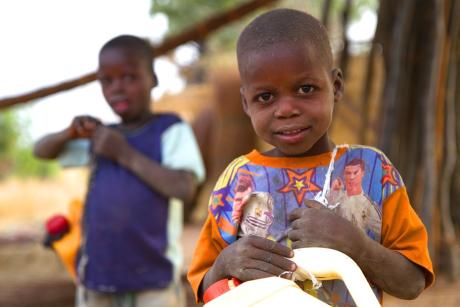
Tin roof shacks and electrical connections in a township
Published June 24, 2015, last updated on June 3, 2020 under Voices of DGHI
"Remind me to avoid this road next time—there are too many potholes," announced our local research assistant as she skillfully maneuvered the car over a particularly bad patch of the road in the slums of Philippi Township. We were flanked on either side by endless rows of metal tin roof shacks. I watched in awe as group of young men gingerly worked atop one of the shacks, rigging an electrical cable to the official power line, adding one more strand to the existing web of thousands of precarious, crisscrossing illegal connections. We cleared the patch of potholes and turned into the final stretch of our routine commute to Mzamomhle Clinic, our research site.
Suddenly, a yellow cordon emblazoned with the ominous black lettering "POLICE LINE DO NOT CROSS" loomed in the horizon blocking our path. A solitary police van was parked on the side and crowds of people, including many young children, milled around the sidelines. It did not take long to locate the object of the commotion; a dead man lay prostrate in the middle of the road in a pool of blood, a blanket half covering his body. A lone forensic investigator, as if performing for the watching crowd, slowly worked the scene placing ballistic markers on the countless bullets that littered the scene.
It dawned on me that we had "witnessed" a snapshot of the violence that plagues some of the poor townships and slums of South Africa. The victim in question had apparently been carjacked and killed by rival taxi owners (private vehicles that ferry people over short trips within the townships). Just a few weeks earlier, my Uber driver had casually showed me a picture of himself in the hospital, his face beaten to pulp after someone requested a ride, which turned out to be a trap. "I have been mugged 12 times in my life. Life is tough out there in Mitchells Plain."
On a visit to the District 6 museum, I would later learn about the forced removal of "colored" people from Cape Town into Mitchells Plain and other townships and the squalid conditions that gave rise to a proliferation of violence and gangsterism in such settings.
My encounters with and witnessing of violence in Cape Town has helped me put my research project and the work of my mentors in context. Research by my mentors' local collaborators at the University of Cape Town has highlighted the key role that witnessing plays in the epidemiology of PTSD in South Africa. Witnessing death or serious injury and unexpected death of a loved one contributed up to forty percent of reported potential traumatic events in South Africa, with interpersonal violence being another significant contributor. In an environment with limited mental health resources and in which mental health is still taboo, developing mental health interventions and building mental health systems is critical in stemming a "silent epidemic" (most of the women we are screening for trauma and mental health symptoms in my research project are speaking about their experiences for the first time).
ImpACT, an intervention being developed by my mentors, is one such intervention. The intervention seeks to improve HIV care engagement by reducing traumatic stress and avoidant coping in women with sexual trauma histories. The program addresses the link between mental health and HIV care adherence, while also being cognizant of the role that sexual trauma and intimate partner violence plays in this relationship. However, sexual trauma and violence are not the only stressors in the women's lives. Women face various stressors in their environment, such as witnessing death and violence. ImpACT aims to equip women with coping skills that can be applied to a broad range of stressors and hence make the intervention relevant to the women's context and lived reality.


